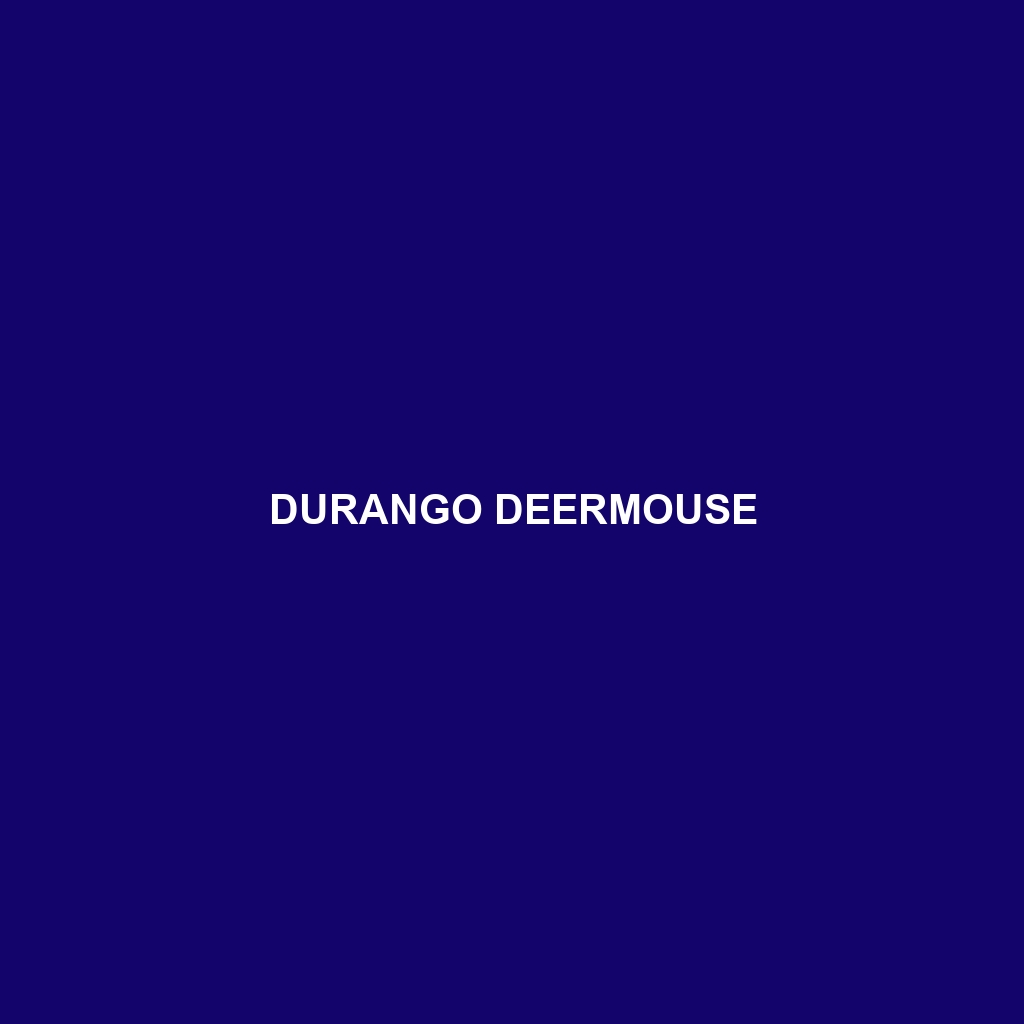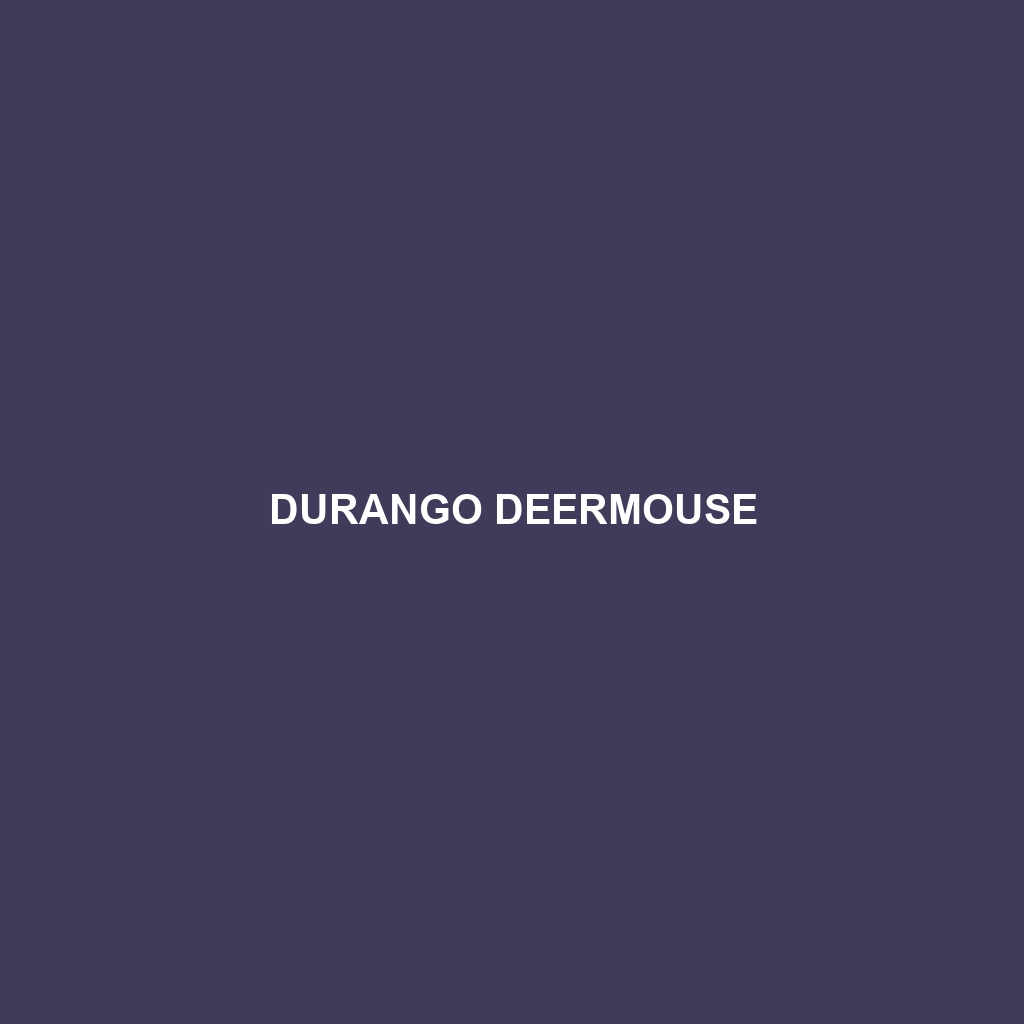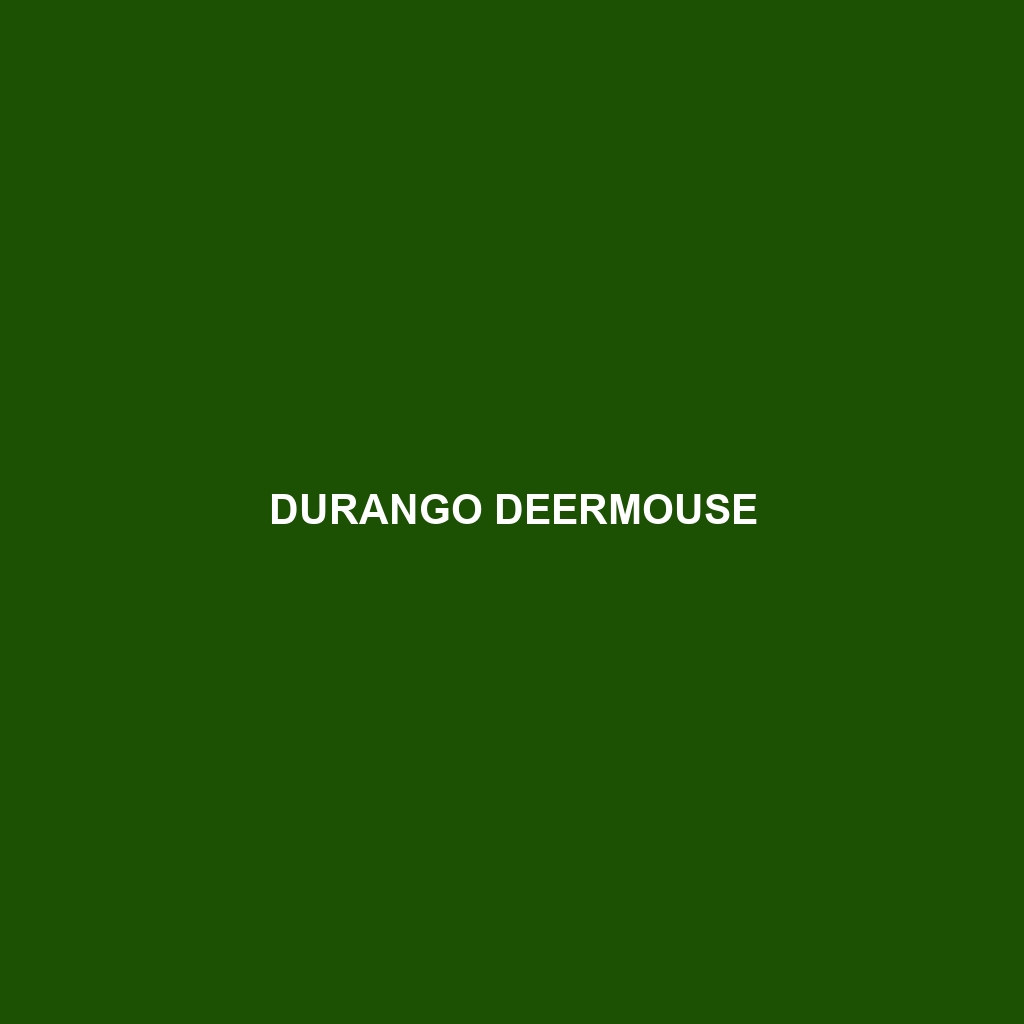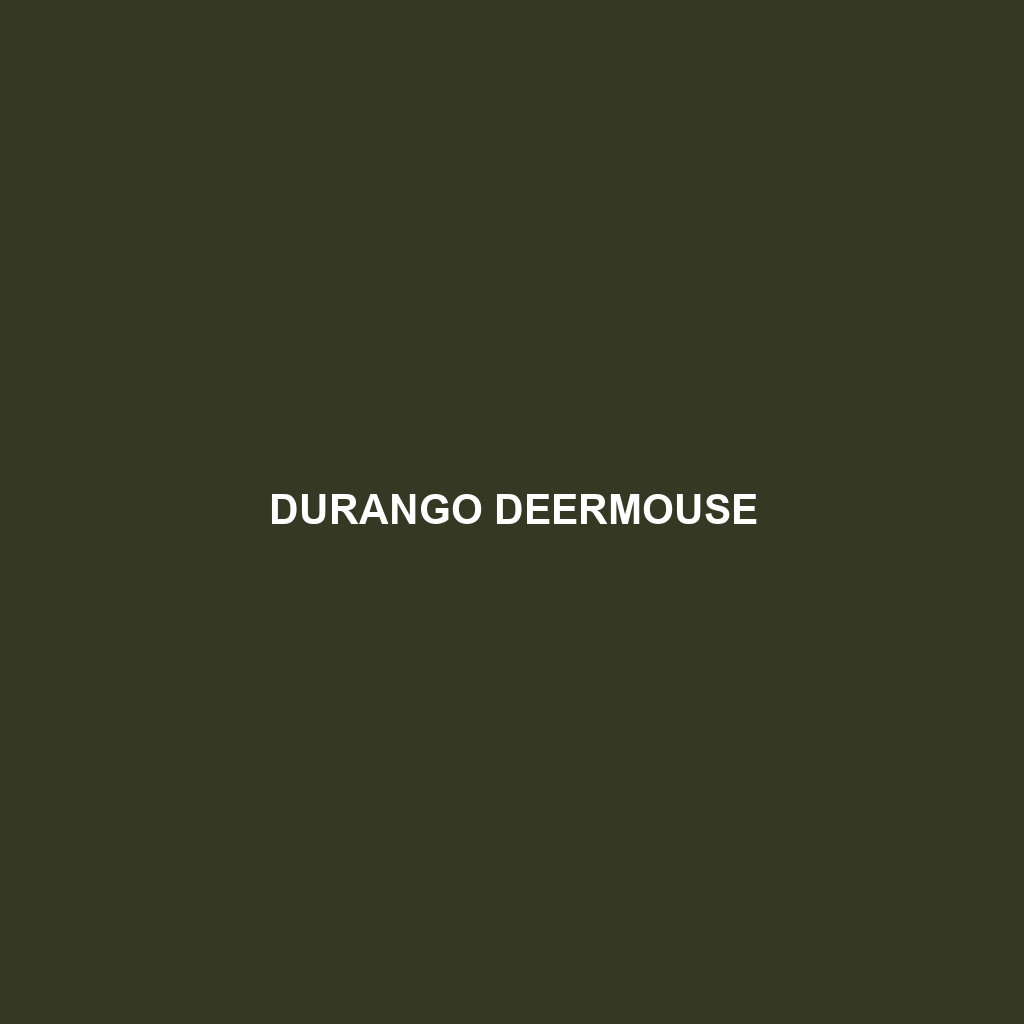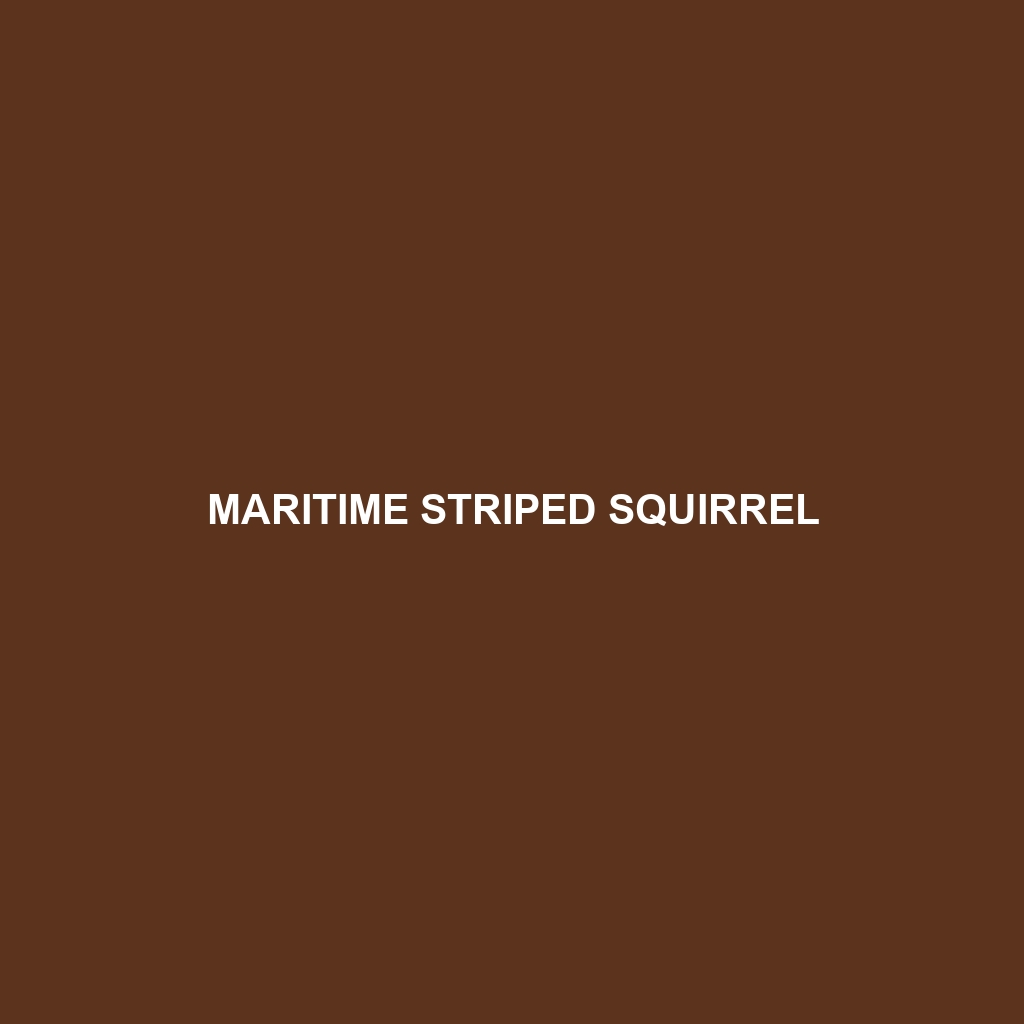Discover the fascinating **Durango Deermouse** (*Peromyscus durangoensis*), a small yet vital rodent native to the Sierra Madre Occidental in Mexico. Thriving in diverse habitats ranging from pine forests to shrublands, this nocturnal species exhibits unique physical traits, social behaviors, and foraging habits. As a **vulnerable** species facing habitat loss, the Durango Deermouse plays a crucial role in its ecosystem, contributing to seed dispersal and serving as both predator and prey. Dive into our comprehensive species description to learn more about its characteristics, behavior, and conservation efforts.
Tag: Pine Forests
Durango Deermouse
Discover the fascinating **Durango Deermouse** (*Peromyscus durangoensis*), a small yet vital rodent native to the Sierra Madre Occidental in Mexico. Thriving in diverse habitats ranging from pine forests to shrublands, this nocturnal species exhibits unique physical traits, social behaviors, and foraging habits. As a **vulnerable** species facing habitat loss, the Durango Deermouse plays a crucial role in its ecosystem, contributing to seed dispersal and serving as both predator and prey. Dive into our comprehensive species description to learn more about its characteristics, behavior, and conservation efforts.
Durango Deermouse
Discover the fascinating **Durango Deermouse** (*Peromyscus durangoensis*), a small yet vital rodent native to the Sierra Madre Occidental in Mexico. Thriving in diverse habitats ranging from pine forests to shrublands, this nocturnal species exhibits unique physical traits, social behaviors, and foraging habits. As a **vulnerable** species facing habitat loss, the Durango Deermouse plays a crucial role in its ecosystem, contributing to seed dispersal and serving as both predator and prey. Dive into our comprehensive species description to learn more about its characteristics, behavior, and conservation efforts.
Durango Deermouse
Discover the fascinating **Durango Deermouse** (*Peromyscus durangoensis*), a small yet vital rodent native to the Sierra Madre Occidental in Mexico. Thriving in diverse habitats ranging from pine forests to shrublands, this nocturnal species exhibits unique physical traits, social behaviors, and foraging habits. As a **vulnerable** species facing habitat loss, the Durango Deermouse plays a crucial role in its ecosystem, contributing to seed dispersal and serving as both predator and prey. Dive into our comprehensive species description to learn more about its characteristics, behavior, and conservation efforts.
Thomas’s Pine Vole
Discover the intriguing world of the Thomas's Pine Vole (*Microtus pinetorum*), a small rodent primarily found in the pine forests of the eastern United States. Learn about its underground lifestyle, unique physical traits, vital role in ecosystem health, and ongoing conservation status. Explore how this unsung hero of the woodland contributes to the biodiversity of its habitat while facing challenges from environmental changes.
Major’s Pine Vole
Discover the unique Major's Pine Vole (*Microtus majori*), a small rodent native to the northeastern U.S. that thrives in dense pine forests and wetland edges. With its remarkable burrowing abilities and distinct physical traits, this vulnerable species plays a vital role in its ecosystem as both a herbivore and prey. Learn about its habitat, behavior, diet, and the conservation efforts underway to protect this fascinating creature.
Calabria Pine Vole
Discover the fascinating world of the **Calabria Pine Vole** (*Microtus savii*), a vulnerable species native to southern Italy's lush mountainous regions. Learn about their unique habitat, solitary behavior, and essential role in the ecosystem, from their diet of roots and seeds to their complex burrow systems that support plant growth and serve as a vital food source for predators. Explore the conservation challenges they face and the importance of protecting these remarkable creatures.
Maritime Striped Squirrel
Discover the Maritime Striped Squirrel, a captivating rodent native to the coastal forests of the southeastern United States. With its striking striped coat and active, social behavior, this vulnerable species plays a vital role in its ecosystem as a seed disperser while facing threats from habitat loss and climate change. Explore their unique characteristics, diet, and conservation status in this informative blog post.
